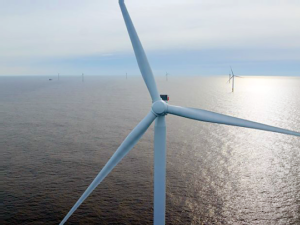Dakota Access Helps Drillers But Isn’t a Bakken Game-Changer
By: | Oct 12 2017 at 11:56 AM
Once hailed as the spur for a North American “energy renaissance,” the $3.8 billion Dakota Access pipeline has limited driller costs in its first four months in operation.
Just don’t expect it to live up to its pre-approval hype.
That’s the conclusion of analysts who say North Dakota’s Bakken shale play will continue to lag the drilling surge in Texas and Oklahoma, pipeline or no pipeline. The conduit’s use has dropped the break-even cost of drilling in the Bakken to around $52 a barrel from $55, as drillers abandon costlier rail shipments, said Erika Coombs, an analyst at BTU Analytics LLC. But that compares with about $46 on average in Texas’s Permian play and $41 in Colorado’s DJ basin, she said.
Is the Dakota Access “a game-changer?” Coombs said in a telephone interview. “The short answer: For the basin as a whole, not really.” It helps, she said, “but it’s not enough to attract capital away from the Permian or Scoop/Stack.”
First proposed in 2014, the 1,172-mile (1,886-kilometer) pipeline is designed to ship as much as 570,000 barrels of crude. However, its construction has faced major opposition from Native American tribes and environmental activists over the last year, including a legal suit that’s ongoing in federal court.
On Wednesday, a judge ruled that use of the conduit, in operation since June 1, could continue while its environmental impact is reviewed as a result of that suit.
Lawyers for Energy Transfer Partners LP, which operates the line, had argued it would be expensive to purge or plug the conduit while the U.S. Army Corps of Engineers conducted a supplemental review into aspects of the project, including its impact on the hunting and fishing rights of Native American tribes.
There’s a “serious possibility” that the corps will be able to back its prior conclusions for approving the pipeline’s route, U.S. District Judge James E. Boasberg ruled Wednesday. But he urged the Corps not to treat his decision “as an exercise in filing out the proper paperwork” but to give serious considerations to errors that were made and identified. A follow-up court conference has been set by Boasberg for Oct. 18.
U.S. Justice Department spokesman Mark Abueg declined to comment on the court’s decision. Vicki Granado, a spokeswoman for Energy Transfer, didn’t immediately respond to request for comment.
The ruling is a win “for all major interstate infrastructure projects currently under construction or consideration,” said Craig Stevens, a spokesman for the GAIN Coalition, a group that promotes more infrastructure development.
When newly inaugurated President Donald Trump advocated green-lighting the Dakota Access in January, it was hailed as “a new beginning” for North America’s “energy renaissance,” in a statement by Ron Ness, president of the North Dakota Petroleum Council. “As Bakken crude is finally compensated for its true value, state tax coffers, mineral owners and workers will reap the rewards,” he said at the time.
And it has helped. In July, just a month after the conduit began operating, rail transported just 10 percent of Williston Basin output, down from 32 percent a year ago, according to the North Dakota Pipeline Authority. The pipeline runs from North Dakota to Illinois, where flows can be diverted to the Midwest and, eventually, make their way to the heart of the U.S. energy market, the U.S. Gulf Coast.
But even with cheaper transport, and smoother access to major markets, the Bakken remains disadvantaged, both in terms of location and overall cost.
Named for Henry Bakken, a North Dakota farmer whose land hosted the first well in the region in the early 1950s, the Bakken is expected to produce an average of 1.1 million barrels a day of oil this year and next, a figure lower than the 1.2 million barrels produced in 2015, according to the Energy Information Administration. At the same time, Permian production is expected to reach 2.9 million barrels a day by the end of next year, the EIA said in July.
The Bakken will continue to produce but it won’t change the bigger picture, said Nick Barry, a senior analyst at McKinsey Energy Insights in Houston. “On a macro level, the boost that DAPL has given the Bakken’s production is minimal when considered in the greater context of North American production,” he said.
The Bakken’s lack of growth “really is from the competition with the Permian basin and the Oklahoma Anadarko basin,” said Lynn Helms, director of the North Dakota’s Department of Mineral Resources, in a September webcast. One big problem, according to Helms, is that skilled, experienced workers left for other plays when the oil rout hit.
“It’s been difficult if not impossible to get them to move back to North Dakota,” he said.
The pipeline has opened new markets for Bakken drillers, which offers new promise for their product, said Ryan Saxton, manager of oil transportation in North America at Genscape Inc., an energy data provider. But, he added,“that’s not going to get you back to the hey-day of the Bakken.”








